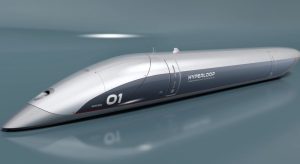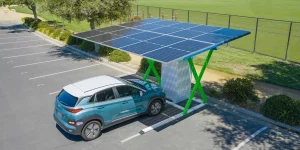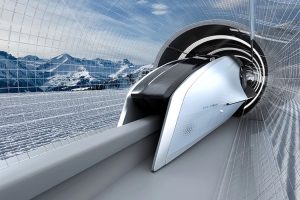Engineering, the Future of Transportation.
Transportation has become an indispensable part of modern life, facilitating the movement of people and goods across the globe. However, our current transportation systems face numerous challenges that demand innovative engineering solutions.
Urbanization has led to congested cities and increased traffic, resulting in time inefficiencies and economic losses. Moreover, the environmental impact of transportation, particularly from carbon emissions and pollution, has become a critical concern in the face of climate change and air quality deterioration. With its ability to conceptualize, design, and implement new technologies, engineering is at the forefront of shaping the future of transportation to address these challenges effectively.
Engineering has historically driven significant breakthroughs in transportation. From the development of the steam engine during the Industrial Revolution to the advent of airplanes and the construction of intricate highway networks, engineers have continuously innovated and revolutionized transportation. In the current era, engineering will be pivotal in incorporating emerging technologies, green solutions, and sustainable practices to create a seamless and eco-friendly transportation landscape.
Emerging Technologies in Transportation Engineering
Autonomous vehicles are on the cusp of transforming personal and public transportation. Engineers are designing self-driving cars that can perceive their surroundings through sensors, cameras, radar, and lidar technology. The integration of artificial intelligence enables these vehicles to process vast amounts of data and make real-time decisions, ensuring safe and efficient navigation. Major tech and automobile companies have invested heavily in autonomous vehicle research and development, and some cities have already begun trials for independent taxi services.
Beyond road transportation, engineers are also exploring the potential of autonomous drones for cargo delivery and other applications, opening up new avenues for efficient logistics and last-mile connectivity. Electric vehicles (EVs) are becoming increasingly popular as a sustainable alternative to traditional internal combustion engine vehicles. Engineers are working to design EVs with longer ranges, faster charging capabilities, and affordable price points to make them more accessible to the general public. The development of solid-state batteries and advancements in battery management systems address current EV technology’s limitations, such as range anxiety and long charging times.
In parallel, engineers are collaborating with city planners to create a comprehensive charging infrastructure that caters to the needs of electric vehicles. Initiatives like fast-charging stations along highways, induction charging for public transportation, and integrated charging solutions in parking facilities make electric lift more practical and viable. Hyperloop, a concept first introduced by Elon Musk, proposes using low-pressure tubes to transport pods at high speeds, significantly reducing travel time between cities. Engineers are working on designing the hyperloop infrastructure and addressing challenges related to maintaining near-vacuum conditions, ensuring passenger safety, and optimizing propulsion systems. Several companies and research institutions worldwide are developing hyperloop prototypes and conducting feasibility studies to realize this futuristic transportation vision.

Other high-speed travel concepts, such as magnetic levitation trains (maglev) and supersonic air travel, are also explored as potential solutions for efficient long-distance transportation.With the advent of technology and increasing interest in space exploration, engineers envision novel aerial and space transportation concepts. Vertical takeoff and landing (VTOL) aircraft are being developed for urban air mobility, providing on-demand transport within cities and addressing the challenges of traffic congestion and last-mile connectivity. In space transportation, private companies are pioneering space tourism and commercial spaceflight. Engineers are designing reusable rockets, developing spaceports, and ensuring passenger safety for the advent of space tourism. These efforts aim to expand humanity’s access to space and enable the colonization of celestial bodies.
Sustainability and Green Engineering in Transportation
Sustainability is a fundamental consideration in modern transportation engineering. To minimize the environmental impact, engineers are integrating green design principles into every aspect of transportation. Lightweight materials, such as advanced composites and carbon fiber, are being used to reduce the energy consumption of vehicles and improve fuel efficiency. Aerodynamic designs are being implemented to decrease drag and increase overall energy efficiency.
Additionally, engineers are optimizing energy recovery systems, such as regenerative braking, which captures and stores energy during deceleration, thus reducing energy waste and extending the range of electric vehicles.Engineers are embracing renewable energy sources to reduce transportation’s carbon footprint further. Solar-powered charging stations for electric vehicles are being installed, utilizing abundant sunlight in many regions to generate clean energy. Wind power is also harnessed for charging infrastructure, especially in windy coastal areas, providing an additional sustainable energy source for electric vehicles.

Hydrogen fuel cell technology is another avenue of exploration. Engineers are developing fuel cell vehicles that convert hydrogen gas into electricity, emitting only water vapor as a byproduct. Hydrogen fuel cell-powered vehicles have the potential to offer long driving ranges and fast refueling times, making them an attractive option for certain transportation use cases.
AI and Machine Learning in Transportation
Artificial intelligence and machine learning have proven instrumental in enhancing various aspects of transportation engineering. In design, AI-driven simulations and optimization algorithms help engineers create more efficient and aerodynamic vehicle shapes, reducing fuel consumption and improving overall performance. AI-based control systems play a crucial role in autonomous vehicles, enabling them to navigate complex environments, respond to unpredictable situations, and ensure passenger safety. Reinforcement learning algorithms allow self-driving cars to learn from real-world experiences, continuously improving their driving skills.
Traffic management is another area where AI shines. Engineers are developing intelligent traffic control systems that use real-time data from cameras, sensors, and GPS to optimize traffic flow, reduce congestion, and minimize travel time. These systems also enable adaptive traffic signals, prioritizing routes based on current traffic conditions to avoid bottlenecks.
In logistics, AI-powered route optimization algorithms help streamline the movement of goods, reducing delivery times and fuel consumption. Machine learning algorithms are also being utilized to predict maintenance needs for transportation infrastructure and vehicles, optimizing maintenance schedules and reducing downtime.
Infrastructure and Regulatory Considerations
The successful implementation of emerging transportation technologies relies heavily on supporting infrastructure. Engineers are working to build smart cities with integrated transportation systems, including dedicated lanes and signals for autonomous vehicles, electric vehicle charging stations, and bike-sharing programs.
Engineers are designing specialized tracks and stations for high-speed transportation technologies like hyperloop and maglev trains to accommodate high speeds and provide a seamless passenger experience. Furthermore, urban planners and engineers are collaborating to create multimodal transportation hubs that combine various transportation modes, making it easy for passengers to switch between different forms of transport seamlessly.

Safety is paramount when introducing new transportation technologies to the public. Engineers must work closely with regulatory bodies to develop safety standards and certification processes for autonomous vehicles, electric transportation, and other innovative modes of travel.
In the case of autonomous vehicles, engineers are conducting extensive testing, simulations, and validation to ensure that self-driving cars meet stringent safety requirements. They are also developing fail-safe mechanisms and redundancy systems to minimize the risk of accidents. Similarly, space transportation ventures, including commercial spaceflight and space tourism, necessitate stringent safety protocols. Engineers are collaborating with regulatory agencies to establish guidelines and procedures to safeguard passengers and ensure the viability of commercial space travel.
Case Studies of Innovative Engineering in Transportation
The evolution of transportation engineering has been marked by numerous groundbreaking innovations that have revolutionized how we travel and transport goods. Engineers involved with the development of electric vehicles have made tremendous strides in advancing electric vehicle technology, with companies like Tesla leading the way. Tesla’s Model S, Model 3, Model X, and Model Y have been instrumental in popularizing electric cars with their long ranges, rapid acceleration, and cutting-edge technology.
Autonomous Vehicle Technology is another groundbreaking innovation that has changed our means of good production. Companies like Waymo, Google’s autonomous vehicle division, have been at the forefront of independent vehicle research and development. Waymo’s fleet of self-driving cars has undergone extensive real-world testing and has logged millions of autonomous miles.
Space Tourism is another major exception when it comes to revolutionized changes in transportation. Companies like SpaceX and Blue Origin have been working on commercial spaceflight ventures, with SpaceX successfully launching civilians into space as part of its Crew Dragon missions.
Companies like Virgin Hyperloop and SpaceX’s Hyperloop Pod Competition have been driving innovation in high-speed transportation as well. Virgin Hyperloop has conducted successful test runs of its hyperloop pods, showcasing the potential of this futuristic transportation concept.
Conclusion
The future of transportation engineering promises to be a transformative and sustainable journey. Engineers will redefine how we move and connect with the world by leveraging emerging technologies like autonomous vehicles, electric transportation, and high-speed travel concepts. Sustainability and green engineering principles will be central to these advancements, minimizing the environmental impact of transport and contributing to global efforts to combat climate change.
Integrating AI and machine learning in transportation will enhance safety, efficiency, and convenience, making travel safer and more accessible. Additionally, advancements in transportation infrastructure will foster intelligent and connected cities, revolutionizing urban mobility and enhancing the overall quality of life for urban dwellers.
Reflecting on the remarkable progress in transportation engineering, we can only anticipate an even more exciting future. Engineers, as the vanguards of progress, will continue to push the boundaries of innovation, ushering in a new era of transportation that not only meets the demands of the present but also embraces the needs of future generations. By engineering a sustainable, efficient, and interconnected transportation system, we will pave the way for a brighter and more prosperous future for society and the environment.

